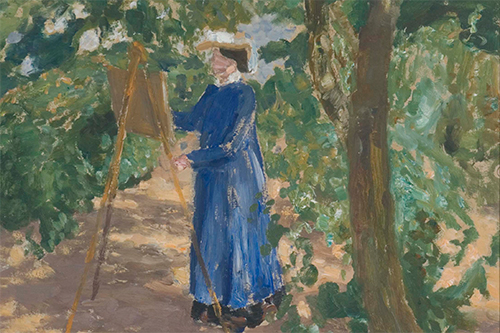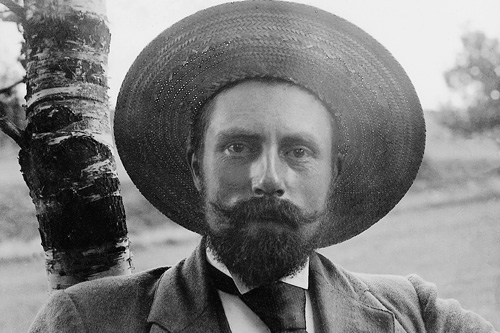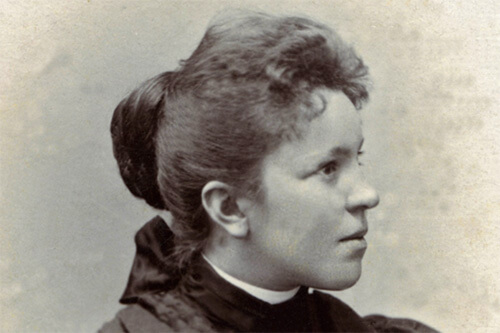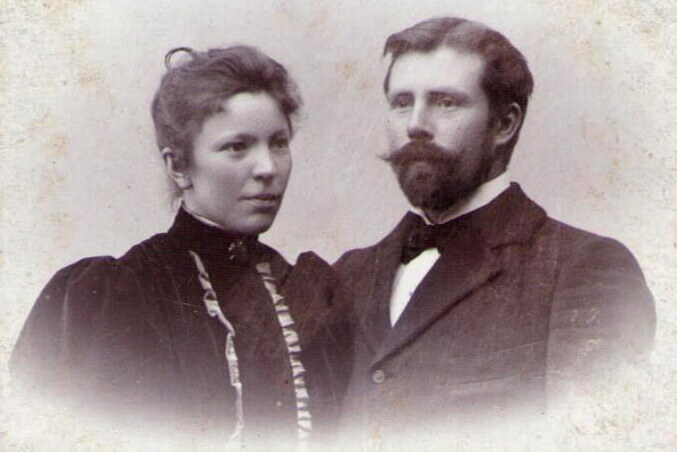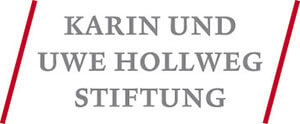
The Overbeck-Museum
THE PAINTER COUPLE
The Overbeck-Museum displays works by the Worpswede painters Fritz and Hermine Overbeck: Landscape paintings of Worpswede and Bremen-Vegesack, where they used to live, as well as motifs from the North Sea coast and the Swiss mountains, form the main focus of their oeuvre, which additionally encompasses still lifes and plant drawings. The broad spectrum of techniques they used includes oil paintings and etchings, watercolours and drawings.
THE EXHIBITIONS
Quarterly exhibitions give an insight into the diversity of the artistic legacy of Fritz and Hermine Overbeck. In addition, works by others, including contemporary artists, will be presented. These changing juxtapositions allow new perspectives on the work of Fritz and Hermine Overbeck. One focus is on landscape art from the late 19th century to the present day.
THE PROGRAMME
A varied programme of events invites you to immerse yourself with all your senses in the art of Fritz and Hermine Overbeck. Guided tours through the exhibition, short lectures on the “Picture of the Month”, readings, art trips and a wide variety of educational offers for children and adolescents open up new approaches to the life and work of the painter couple.
FRITZ AND HERMINE OVERBECK
FRITZ OVERBECK
Fritz Overbeck (1869 – 1909) was born in Bremen. From 1889 to 1893 he studied landscape painting at the Academy of Fine Arts in Düsseldorf, where he met Fritz Mackensen, Otto Modersohn and Heinrich Vogeler. Together, the young painters settled in Worpswede, thus establishing the fame of the artists’ colony which continues till today. In 1895, their first great exhibition in the Royal Glass Palace in Munich was a great success and the group received international acclaim. The members of the Worpswede Association became known as the most famous German painters of their time, and the artists’ colony in the Teufelsmoor turned into the epitome of naturalistic landscape painting.
Hermine Overbeck-Rohte
Hermine Overbeck-Rohte (1869 – 1937) was born and grew up in Walsrode. Initially, she was not allowed to study art but had to learn housekeeping and nursing. She took private painting lessons, though, and trained as a photographer. It was not until 1892 that she was able to enroll as an art student at the Ladies Academy in Munich. She studied landscape and still life painting for four years with the renowned Austrian painter Tina Blau-Lang. At an exhibition in the Royal Glass Palace in Munich in the summer of 1896, she first saw works by Fritz Overbeck. She was so enthusiastic about his work that she moved to Worpswede and became his student.
THE PAINTER COUPLE
The painters got engaged only three months after they had met and married the following year. In 1898 their son Fritz Theodor was born, followed by their daughter Gerda in 1903. The family lived in Worpswede until 1905 and then moved to “Bröcken near Vegesack” in the north of Bremen. Hermine Overbeck-Rohte was ill with tuberculosis and her health required a change of air. In addition, Fritz Overbeck was looking for new motifs and for some distance from the group of artists in Worpswede, which he felt to be increasingly constricting. In their new home in Vegesack, both painters created numerous paintings of the local landscape and of their own house and garden.
In 1908/09, Hermine Overbeck-Rohte spent almost a full year in the sanatorium in Davos, Switzerland, in order to cure her tuberculosis. However, when she was finally allowed to return home, the painter couple had only three more days left together: In June 1909 Fritz Overbeck died unexpectedly of a stroke at the age of only 39.
After the early death of her husband, Hermine Overbeck-Rohte first and foremost took a stand for his commemoration. She organized exhibitions of his paintings and at the same time neglected her own artistic work. She never publicly exhibited her paintings during her lifetime. When Hermine Overbeck-Rohte died aged 68 as a result of a car accident, her more than 200 oil paintings were found, hidden in her husband’s studio.
THE FOUNDATION
The Overbeck-Museum was founded in 1990 by Gertrud Overbeck, the granddaughter of the painter couple, and was directed by her personally for 17 years. Thus, it is deeply rooted in a tradition of great care for the artistic legacy within the Overbeck family: After the early death of Fritz Overbeck his widow had taken over this task, later to be continued by their children. Through the work of their granddaughter, a large part of the artistic legacy was transferred to a foundation and has since been made accessible to the public in regular exhibitions in the Overbeck-Museum.
THE SITE
After initial considerations to locate the Overbeck-Museum in Worpswede, where the artistic career of Fritz and Hermine Overbeck began, it was finally founded in Bremen-Vegesack, where the artist couple moved to in 1905. It is thus the only museum in Bremen city dedicated to one of the founding fathers of the artists’ colony of Worpswede. The house, where the painter couple used to live, is very close. After their death, it was first inhabited by their daughter and then, until her death in 2019, by their granddaughter.
THE ADMINISTRATION
In 2007, Dr. Friederike Daugelat became head of the Overbeck-Museum, and in the same year the association “Friends of the Overbeck-Museum e.V.” joined the Kulturbüro Bremen Nord gGmbH. Together with the KITO, Kulturbahnhof and Gustav-Heinemann-Bürgerhaus, the Overbeck-Museum forms a union of cultural and socio-cultural institutions in the north of Bremen.
Since 2011, the management of the Overbeck-Museum has been in the hands of Dr. Katja Pourshirazi.
THE OLD PACKHOUSE VEGESACK
THE BEGINNINGS
The Overbeck-Museum is located in the Old Packhouse Vegesack, Bremen’s oldest and largest preserved storehouse. Located in the historic centre in the Alte Hafenstraße (Old Harbour Street), it is one of the protected historic buildings in the immediate vicinity of Vegesack harbour. Built around the year 1622, Vegesack harbour was a central base for whaling and herring fishing for about 200 years and is considered the oldest man-made port in Germany.
ANNEXES
The Old Packhouse Vegesack was built around 1622, at the time when the harbour was founded. Here, goods were stored before being transported further. At first, it was a two-storey building with half the floor area of today, but within the 18th and 19th centuries, annexes have been added that form today’s three floors plus an attic, with a length of 38 meters, a width of more than 10 meters and a ridge height of more than 16 meters. The striking gable for the hoist dates from 1899.
THE KITO
The baroque sandstone portal was also added later, as documented by the stone with the foundation date “Anno 1758”. The companies which have been based in the building since 1800 included a brewery, a bakery for ship bread, a grocery store and a cardboard factory. From the latter derives the name “KITO” for the building, since the cardboard factory was colloquially called “Kistentod” (i.e. “death of wooden crates”), which was abbreviated to “KiTo”.
THE MUSEUM SEAL OF QUALITY

The Overbeck-Museum has distinguished itself in terms of excellence. As the third museum in Bremen – after the Gerhard Marcks Haus and the Focke Museum – it received the Museum Seal of Quality in 2019, which is awarded annually by the Museumsverband Niedersachsen und Bremen (MVNB) together with the state of Lower Saxony and the Lower Saxony Sparkassenstiftung.
For its application for the seal of quality, which certifies that the museum meets international standards, the Overbeck-Museum has undergone an intensive evaluation. All working fields were put to the test: exhibitions, research and educational offers, collection management, the state of digitalization, public relations, finances and administration, accessibility and visitor service. Specialist advice and further training supported the process.
The Museum Seal of Quality is awarded for seven years. After this period of time, the museum has to undergo a re-evaluation for recertification.
